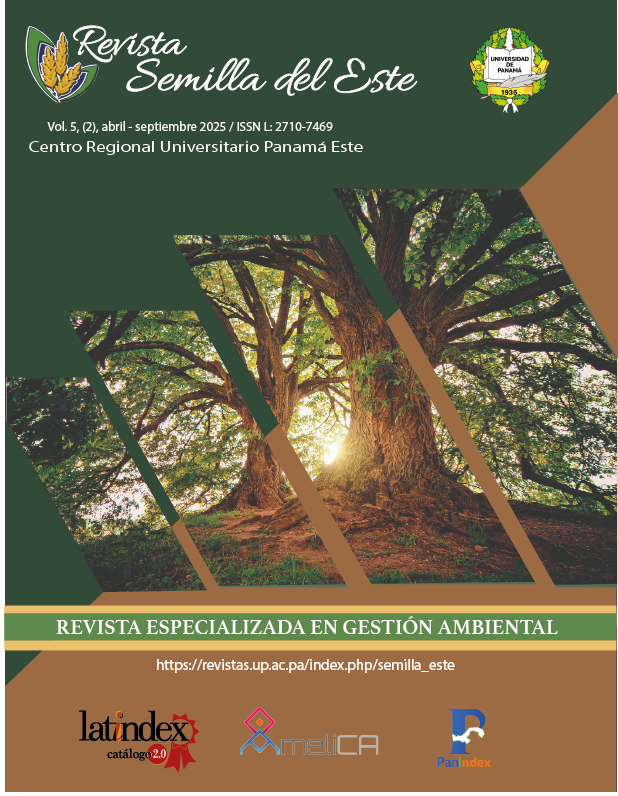

Copyright (c) 2025 Revista Semilla del Este

This work is licensed under a Creative Commons Attribution-NonCommercial-ShareAlike 4.0 International License.
The general purpose of this work was to evaluate the biological quality of a wooded area of Parque Natural San Francisco, throughout the measurement of the ecological attributes of diurnal butterflies’ community (Lepidoptera: Rhopalocera). For this, we collected butterflies in adult state in a total area of 2,078 meters, during the month of July and August of 2018. The collection was done with an entomological net and with the VanSomeren-Rydon trap with bait of beer with banana, beer with mango-apple and yeast with apple. The samples were transported to the laboratory and were identified with taxonomic keys. The analysis of the data has been made by using the Margalef (DMg) wealth index, Shanon – Wiener (H’) and the quantitive index of Chao-Sorensen. There were captured a total of 71 specimens of diurnal butterflies, distributed in 7 families and 26 species. The greatest representation was the Nymphalidae family, with a wealth of the 14 species, followed by the Pieridae, Papilonidae, Hesperiidae, Lycanidae and Riodinidae families, each one with three (3) species, respectively. The greatest abundance of butterflies was obtained in the month of July with 41 individuals, followed by August with 30. The more abundant species were Urania boiduvalii, Morpho Menelaus amathonte, Uraneis ucubis and the Parides gender. Some of the species were located inside of the wood, constituting an indicator of the high grade of fragmentation, the secondary succession status, considering them as a secondary forest and forest edges.